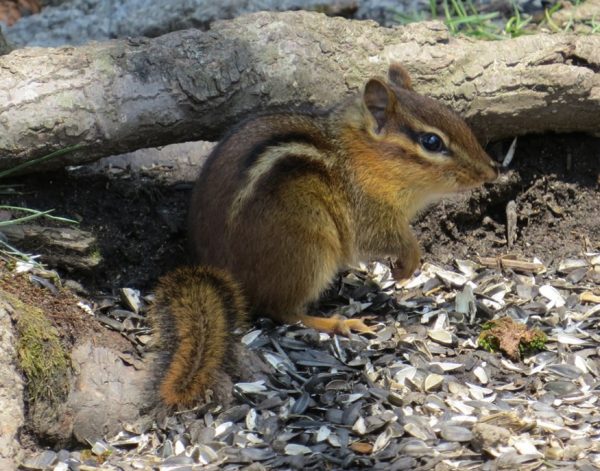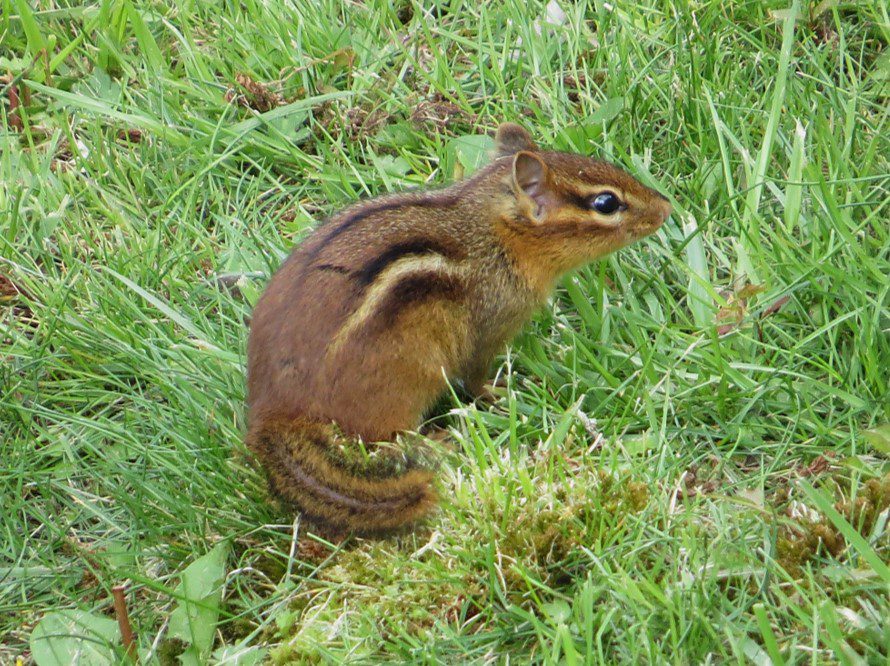From woods to city parks and yards, here’s one little animal that gets around

I’ve seen this cute little animal in some very different places – the chipmunk. I’ve seen them in the N.C. mountains as I hiked the Appalachian Trail, on the sidewalk in Chapel Hill at the UNC-CH campus, and in Colorado (a different species) while I climbed Mount Elbert. I’ve never seen one of these little guys in the Uwharries, but I have friends who have.
Eastern chipmunks (Tamius striatus) mainly inhabit deciduous forests and the edges of woodlands and urban parks throughout the eastern United States and southern Canada. They prefer locations with rocky areas, shrubs, or brush or log piles to provide cover. They get their name from the chipping sound they make.
 Chipmunks are omnivorous, and they live in burrows with extensive tunnel systems. Photo:Jeff Beane
Chipmunks are omnivorous, and they live in burrows with extensive tunnel systems. Photo:Jeff Beane
A chipmunk weighs 2 to 5 ounces. They have reddish brown fur with five dark brown stripes contrasting with light brown stripes on their back. There are light stripes above and below their eyes. Tamius striatus has two fewer teeth than other chipmunks. They have four toes on each of their front feet and five toes on each of their back feet.
Chipmunks have pouch-like cheeks with skin that stretches, so they can stuff food in their cheeks to carry to their burrow to store. Their underground burrows can be elaborate with extensive tunnel systems. They are territorial and do not like other chipmunks entering their territory. They are solitary animals except for mating season.
They are omnivorous, eating nuts, berries, worms, seeds, fruit, bird eggs, insects, mushrooms, and snails. Bobcats, hawks, raccoons, foxes, snakes, and domestic cats are chipmunk predators. They do not store fat and do not hibernate, but spend much of winter in a state of torpor, waking up occasionally to feed on their stash.
The average lifespan of a chipmunk in the wild is two to three years, but they can live up to eight years in captivity. Tamius striatus is listed as a species of least concern by the IUCN (International Union for Conservation of Nature and Natural Resources) Red List, because it is widespread, abundant, and there are no major threats.
Keep your eye out for this little guy next time you’re in the woods – or even in your own backyard. You never know where you might spot one.